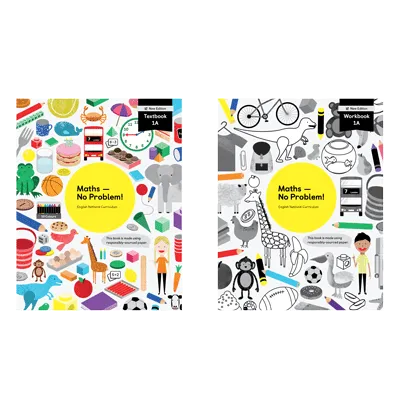Learning intervention strategies: move learners forward when they start to fall behind
Maybe you’re seeing a few children struggle in maths. Or maybe your mid-year assessment identified learning gaps. Effective learning intervention strategies can help you move every learner forward.
As educators, we want to see all our learners succeed and graduate to the next year group with confidence. Our goal is to make sure there are no gaps in learning throughout the year, so children can avoid playing catch up in years to come.
This isn’t always an easy task.
Mid-year assessment and data tracking is essential to identifying learning gaps, and the outcomes play an important role in shaping your plan for the second half of the year. If your mid-year data reveals gaps in learning, using daily learning intervention strategies and intervention groups can be an effective solution.
What is a learning intervention?
Daily interventions are focused, additional maths activities used to make sure a small group of learners keep up with their classmates. They’re also effective teaching tools for plugging specific gaps in learning.
When should I schedule learning intervention strategies?
Learning intervention strategies that move children forward can be scheduled as either a pre-teaching tool or as a follow up intervention after a lesson. Each type of learning intervention happens at a different time in relation to the lesson, but ultimately, they both serve the same purpose.
Let’s take a look at the different types of learning intervention strategies and how you can make the most of them to support your learners.
What are the benefits of pre-teaching interventions?
For some children, certain concepts will be more difficult to grasp. Others may need a slower pace or extra support. Pre-teaching interventions give learners extra time to explore and access the learning.
Use pre-teaching interventions to assess learners
Pre-teaching interventions can be a useful diagnostic tool at the beginning of a unit. If you have a group of children who may struggle with the content, you can use this time to check their level of understanding. The benefits of pre-teaching this way is that it allows teachers to introduce the core idea to learners and address misconceptions right away.
Use pre-teaching interventions to build maths confidence
Pre-teaching can also be used to boost confidence and help children prepare for the upcoming lesson. Providing children with a simplified version of the concept they’ll be learning in the main lesson gives them an opportunity to succeed and become familiar with it, so they can feel confident going into the main maths lesson.
The balancing act of supporting those who need additional help during a lesson and making sure the rest of the class is being extended is no easy mission. However, pre-teaching can allow the teacher to spend extra time with learners who need additional support first, and create more time to attend to other students during the lesson.
Top tip: if your school allows it, the assembly slot is a great time to schedule pre-teaching interventions.
What are the benefits of follow up interventions?
Follow up interventions should happen on the same day a lesson is taught, post-lesson. These interventions allow the teacher to address learners’ misconceptions and plug specific gaps that have been identified during the lesson.
The benefit of having a follow up intervention is that there’s already clear evidence from the lesson as to exactly what the child could and couldn’t do. Because there’s no need for these interventions to be diagnostic, they can be very focused and specific.
Scheduling these follow up interventions can be tricky, however, as there isn’t always an easy time to have them. Consider scheduling follow up interventions straight after lunch while others are silent reading, or allowing your intervention group to pack up early from the afternoon session to attend their daily intervention.
Who should run learning intervention groups?
Ideally, the teacher should run learning intervention groups as they’re the most qualified: they’ve planned the lesson and the intervention activities, so they’ll be very clear about the learning objective. The teacher will also be able to use the time more effectively because they can easily pivot if learners know more or less than what was planned for.
In theory we know this, but many teachers struggle to take learning intervention groups — especially the follow up interventions. This is largely because of time constraints and teacher burnout.
How can teacher aides help with maths interventions?
If you have a teacher aide, try creating a routine where they manage the class for a short time, while you take a group of children for an intervention. Consider scheduling these interventions while children are doing activities after a lesson, or while your teacher aide handles clean up and a story.
However, it’s not always possible for the teacher to take the learning intervention group, so some schools may have the teacher aide manage the interventions. For this to be as effective as possible, the teacher aide should support the main maths lesson. Being involved in the main lesson will allow the teacher aide to maintain consistency with the language and strategies learned.
If this isn’t possible, then it’s important that there’s a clear plan for the intervention and that the teacher aide feels confident and prepared to run the learning intervention group.
Tips for planning your learning interventions
Ready to start organising your learning interventions? Here are a few tips to help you plan your time effectively and support your learners best:
- Keep the intervention group small. You’ll want to work closely with all your learners.
- Use the same location every time. Routine and consistency will make sure the time is used more effectively.
- Have a clear intervention plan and learning objective. In-class interventions are often allocated only a short amount of time during the day, so the learning must be focused.
- Be organised with your intervention resources. You don’t want to waste time finding and handing out resources. If possible, have them already set up. An intervention box with all the lesson resources ready can be useful for taking to and from the intervention space.
- Avoid learners missing lessons in other areas to attend the maths intervention. If possible, schedule learning interventions so that children don’t miss out on other curriculum areas or valuable learning time.
- Record learners’ notes or take photos of their work. This is valuable evidence of progress!
Daily learning interventions shouldn’t be onerous for children — you want to keep these sessions short, focused and fun! Remember, your goal is to plug gaps in learning and to make sure all children are ready to move on to the lesson content the following day.
Book a free trial!
Get an in-depth introduction to Maths — No Problem! and see what this award-winning maths mastery programme can do for your school.

